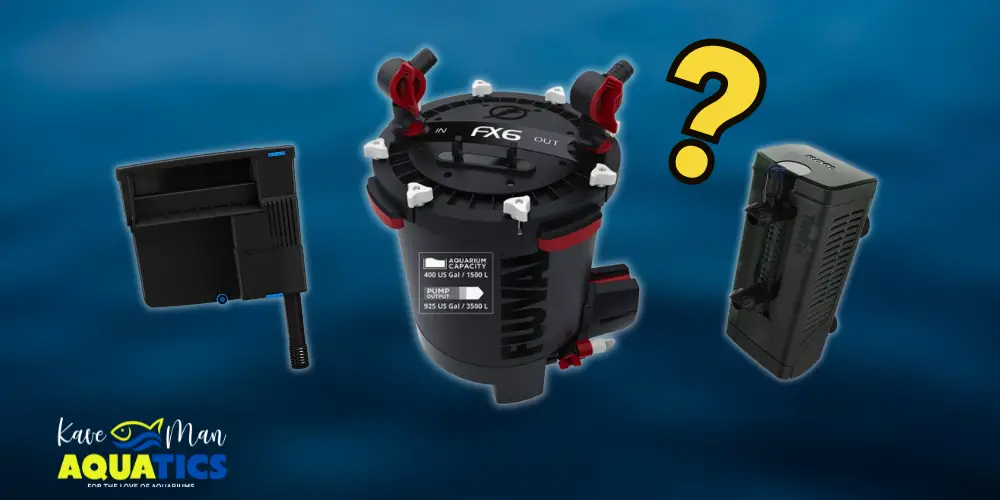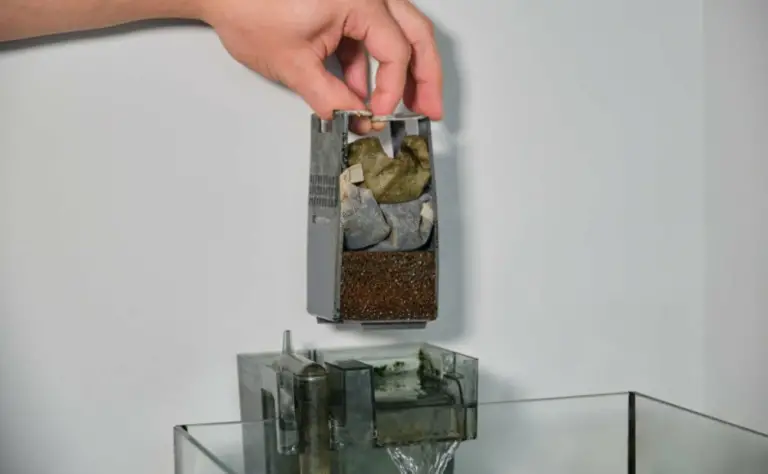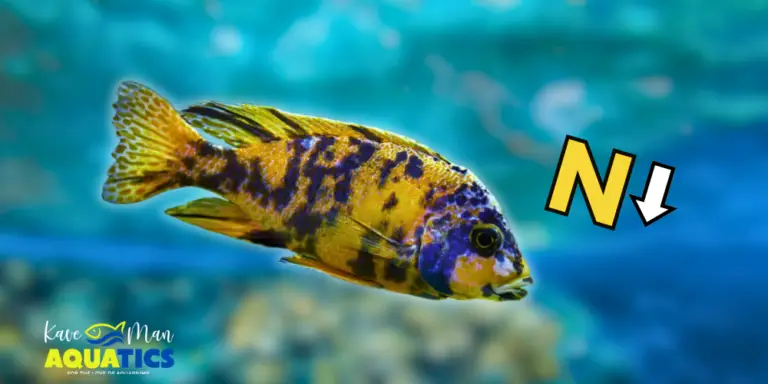Best Aquarium Filter: Keeping Your Tank Clean and Healthy
Choosing the best aquarium filter can feel like picking the perfect pair of shoes — there are sooo many options, and they all claim to be “the one.” Newbies and seasoned hobbyists alike can find it overwhelming.
With so many choices — canister, sponge, hang-on-back — how do you know which one is right for your setup? Don’t worry, I’ve got you covered! Let’s break down our top picks and why!
Why Do Aquariums Need Filtration?
Aquarium filters help clean the water to keep your fishy friends healthy and safe. They do this by removing harmful substances like fish waste, uneaten food, and other debris that can turn the water toxic — a.k.a. nitrates — over time — a.k.a. the nitrogen cycle. Without filtration, your tank could become a cloudy, stinky mess pretty quickly, and your fish would suffer.
Our Top Picks
If you’re unfamiliar with aquarium filters and need recommendations, here are KaveMan Aquatics’ best aquarium filters!
Best for Large Tanks
Fluval FX6 Canister Filter
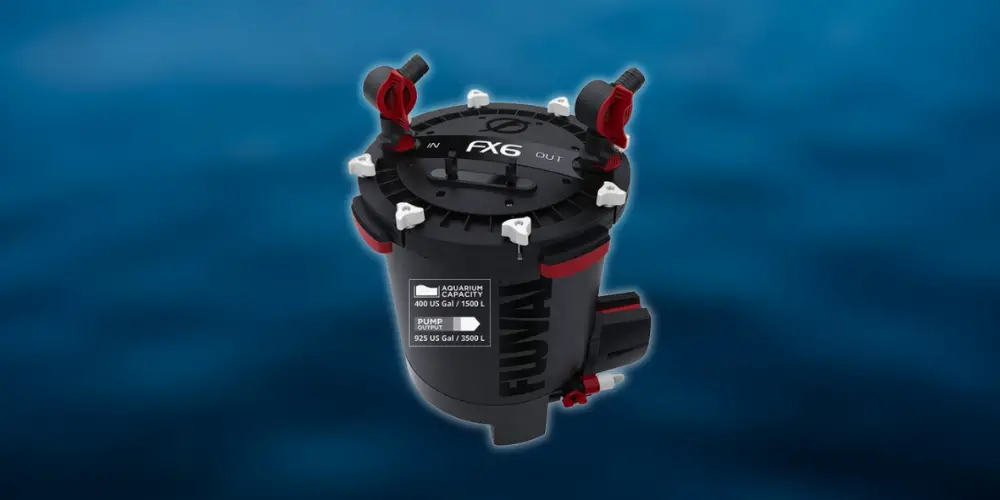
The Fluval FX6 is a beast of a filter. This filter is ideal for large tanks and aquarium enthusiasts who want heavy-duty filtration without the fuss. With its SMART PUMP™ technology, the FX6 constantly boosts performance, so you can spend more time enjoying your tank and less time maintaining it.
Pros:
- Powerful filtration
- Hassle-free setup
- User-friendly
Cons:
- Pricey
- Size
Best for Small Tanks
Fluval U2 Underwater Filter
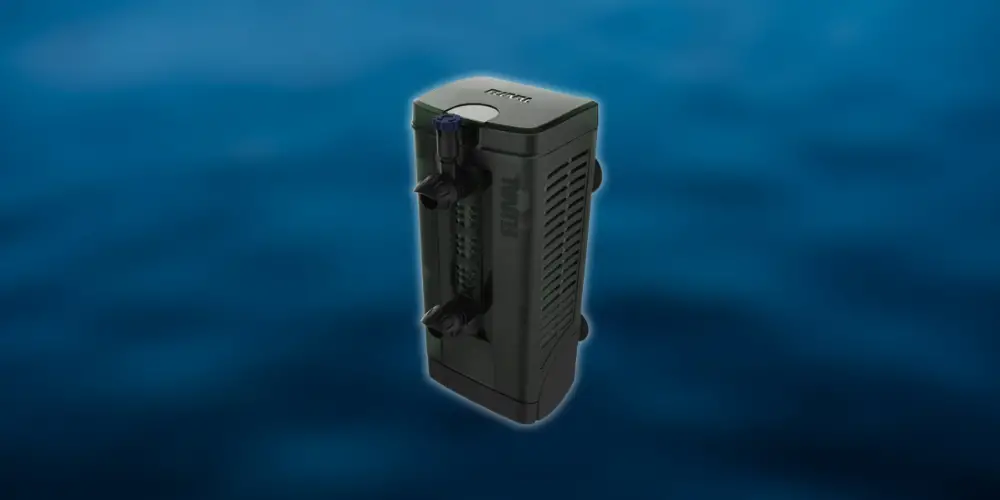
The Fluval U2 is perfect for smaller setups or tanks where external filters just aren’t achievable. It’s compact, versatile, and packs a solid 3-stage filtration system. You can position it vertically or horizontally to suit different tank styles.
Pros:
- Versatility
- Easy maintenance
- Quiet operation
Cons:
- Not for large tanks
- Limited filtration power
Best for Betta Tanks
UPETTOOLS Sponge Filter
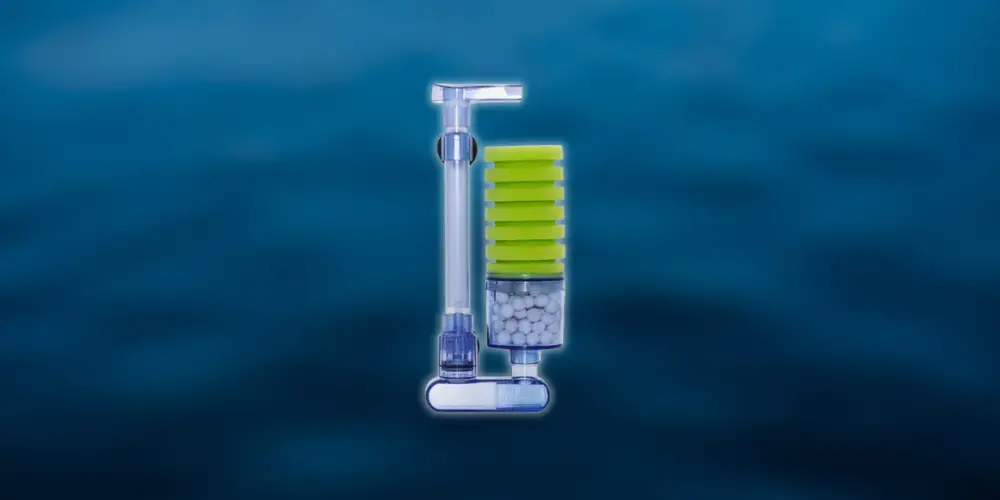
The UPETTOOLS Sponge Filter is an affordable yet highly efficient filter option. Its 7-layer sponge design offers mechanical and biological filtration. It’s perfect for shrimp, betta, and fry tanks. It’s simple to set up — just plug it into an air pump, and you’re good to go! It’s also gentle enough to avoid harming delicate fish or fry.
Pros:
- Great for small tanks
- Low maintenance
- Affordable
Cons:
- Requires an air pump
- Limited filtration capacity
Best Under-Gravel
Penn-Plax Undergravel Filter
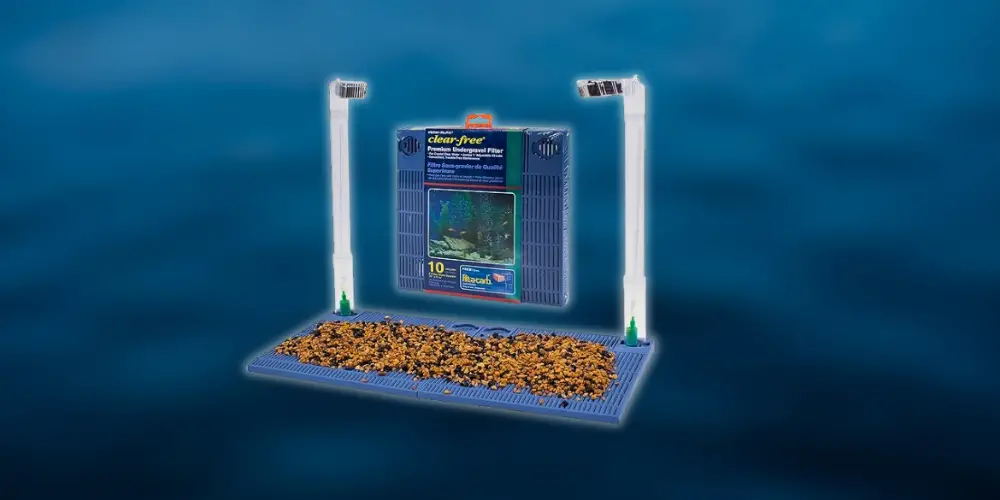
The Penn-Plax Undergravel Filter is an old-school option that’s great for aeration and biological filtration. It’s perfect for fish that prefer gentle water movement and can help reduce tank maintenance — if you’re on top of things! But, it can be tricky to clean and requires an air pump to function.
Pros:
- No moving parts
- Aeration
Cons:
- Difficult to clean
- Setup challenges
Best Canister
Fluval 07 Series Canister Filter
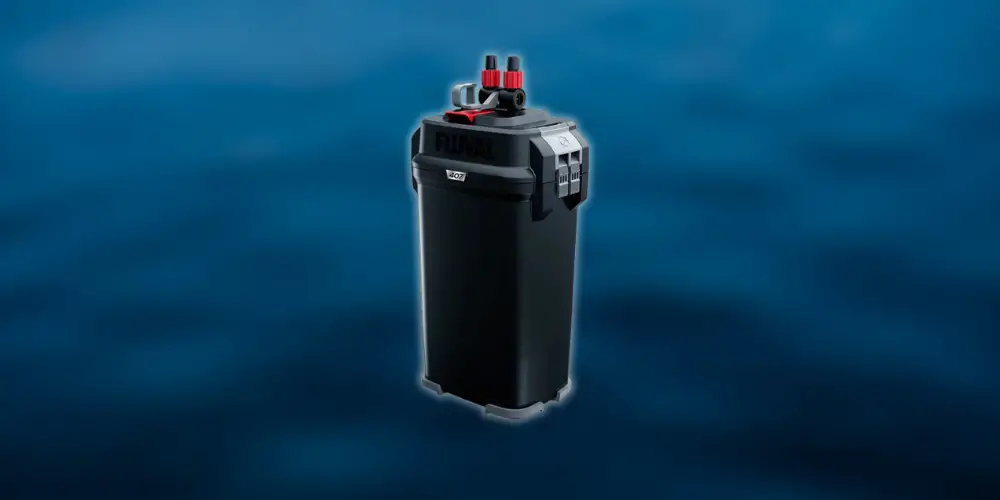
The Fluval 07 Series is the latest generation of Fluval’s popular canister filters. Designed for tanks between 50 and 100 gallons, this filter uses eTEC engineering to deliver powerful pumping action while consuming minimal energy.
Pros:
- Quiet operation
- Energy efficient
- User-friendly design
Cons:
- Expensive
- Large footprint
Best Sponge
AQUANEAT Aquarium Bio Sponge Filter
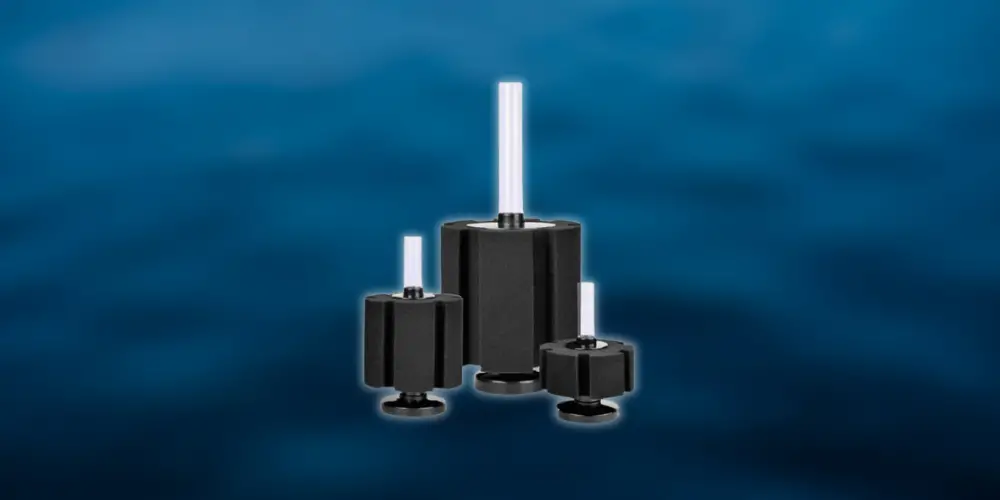
The AQUANEAT Bio Sponge Filter is a dual-purpose filter that provides mechanical and biological filtration. It’s ideal for small and delicate fish, as well as for hatcheries, fry tanks, or tanks with a minimal current requirement.
Pros:
- Fish-safe design
- Oxygen boost
- Easy to set up and clean
Cons:
- Limited filtration capacity
- Requires air pump
Best HOB
Seachem Tidal 110 HOB Filter
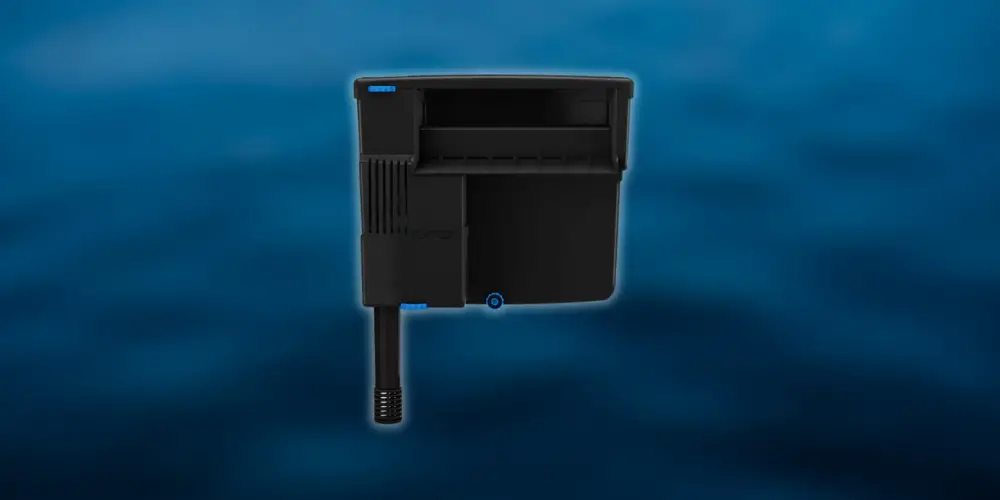
The Seachem Tidal 110 is a hang-on-back filter that’s packed with features. Its surface skimmer cleans debris from the water’s surface, while the adjustable telescoping intake allows you to control water flow. The maintenance alert system takes the guesswork out of knowing when to clean your filter — perfect for busy hobbyists!
Pros:
- Self-priming pump
- Maintenance alert
- Surface skimmer
Cons:
- Bulky
- Price
What to Look for in Aquarium Filtration Systems
Here are a few things to consider when choosing the best aquarium filter for you!
Filter Media Type
Your filters are your tank’s cleaning crew and this crew needs the right tools — a.k.a. filter media. The different media types are:
- Mechanical media traps debris
- Biological media houses beneficial bacteria that break down harmful ammonia
- Chemical media can remove things like medications or tannins.
Gallon Capacity
You wouldn’t put a sports car engine in a go-kart, right? Well, the same goes for your filter. It’s important to match the filter’s gallon capacity to your tank size.
A filter that’s too small will struggle to keep the water clean, while one that’s too powerful could turn your aquarium into a swirling vortex! Ideally, your aquarium filter should filter the entire tank 4-6 times per hour.
Installation
Aquarium filters range from “install in 5 minutes flat” to “you might need a degree in engineering.” You’ll want to look at how easy — or complicated — the installation process is.
Some filters just hang on the back of the tank, plug in, and voila! Others might need a bit of fiddling with hoses and media cartridges. If you’re new to aquariums or just want to keep things simple, choosing an easy-to-install filter will save you time and frustration.
Noise
Nobody wants their aquarium sounding like a vacuum cleaner! The noise level of your filter matters, especially if your tank is in a bedroom, office, or living space.
While some filters are whisper-quiet, others may have you reaching for earplugs. It’s worth checking reviews or product descriptions for noise levels to make sure your fish-watching doesn’t turn into a white noise experience.
Trust me — you and your fish will appreciate a quiet filter!
FAQ
If you have more questions, let’s see if we can answer them!
How do aquarium filtration systems work?
Aquarium filtration systems pull water through various filter media to remove debris, harmful chemicals, and break down toxic ammonia into safer compounds using beneficial bacteria.
What are the types of aquarium filters?
There are a few main types of aquarium filters:
- Hang-on-back (HOB) filters are easy to install and great for most tanks.
- Canister filters are powerful and ideal for larger setups.
- Sponge filters are gentle, making them perfect for fry and small fish tanks.
There’s also internal filters for small or nano tanks, and undergravel filters, which pull water through the substrate.
How do you clean an aquarium filter?
Cleaning an aquarium filter is a breeze! First, unplug and remove the filter from the tank.
For mechanical media, like sponges, just rinse them in tank water. Never use tap water as it can kill the good bacteria! For chemical media like activated carbon, replace it if it’s exhausted. Biological media only needs a gentle rinse in tank water to keep the helpful bacteria intact.
Easy, right?
How often should I change my aquarium filter?
You don’t usually need to change the entire filter, just the media inside.
Mechanical media should be rinsed every 2-4 weeks. Chemical media, like carbon, needs replacing about every 4-6 weeks. Biological media can last much longer, but a gentle rinse now and then helps keep it working efficiently.
Keep an eye on your water quality and adjust!
Keep Your Aquarium Thriving With Aquabuildr!
With so many options out there, finding the best fit can feel overwhelming — but now you’re armed with all the info you need to make an informed decision.
Ready to take your fish-keeping game to the next level? The Aquabuildr app is the ultimate tool for aquarium lovers of all experience levels. Aquabuildr’s intelligent algorithm helps you choose the right fish, monitor your tank’s health, and stay on top of everything — all with a tap.
Get started for FREE on the App Store or Google Play store, and start building your dream aquarium!
Best Aquarium Filter: Keeping Your Tank Clean and Healthy
Find the best aquarium filters to keep your tank clean and healthy! Learn how to choose the right one!

